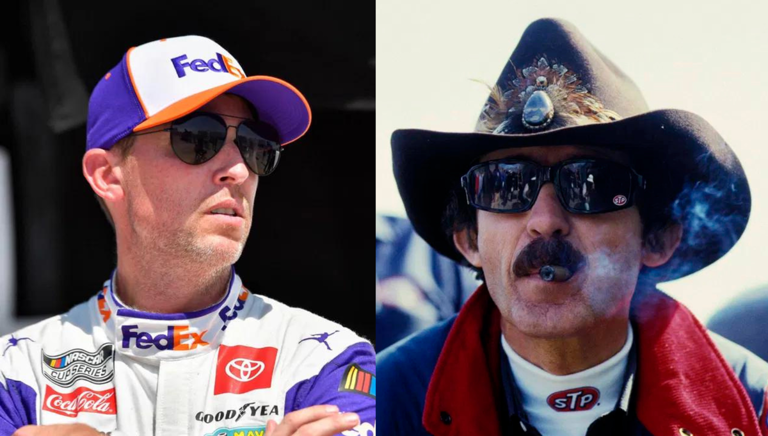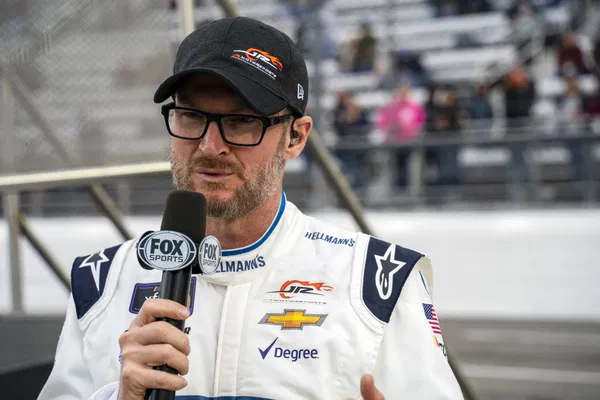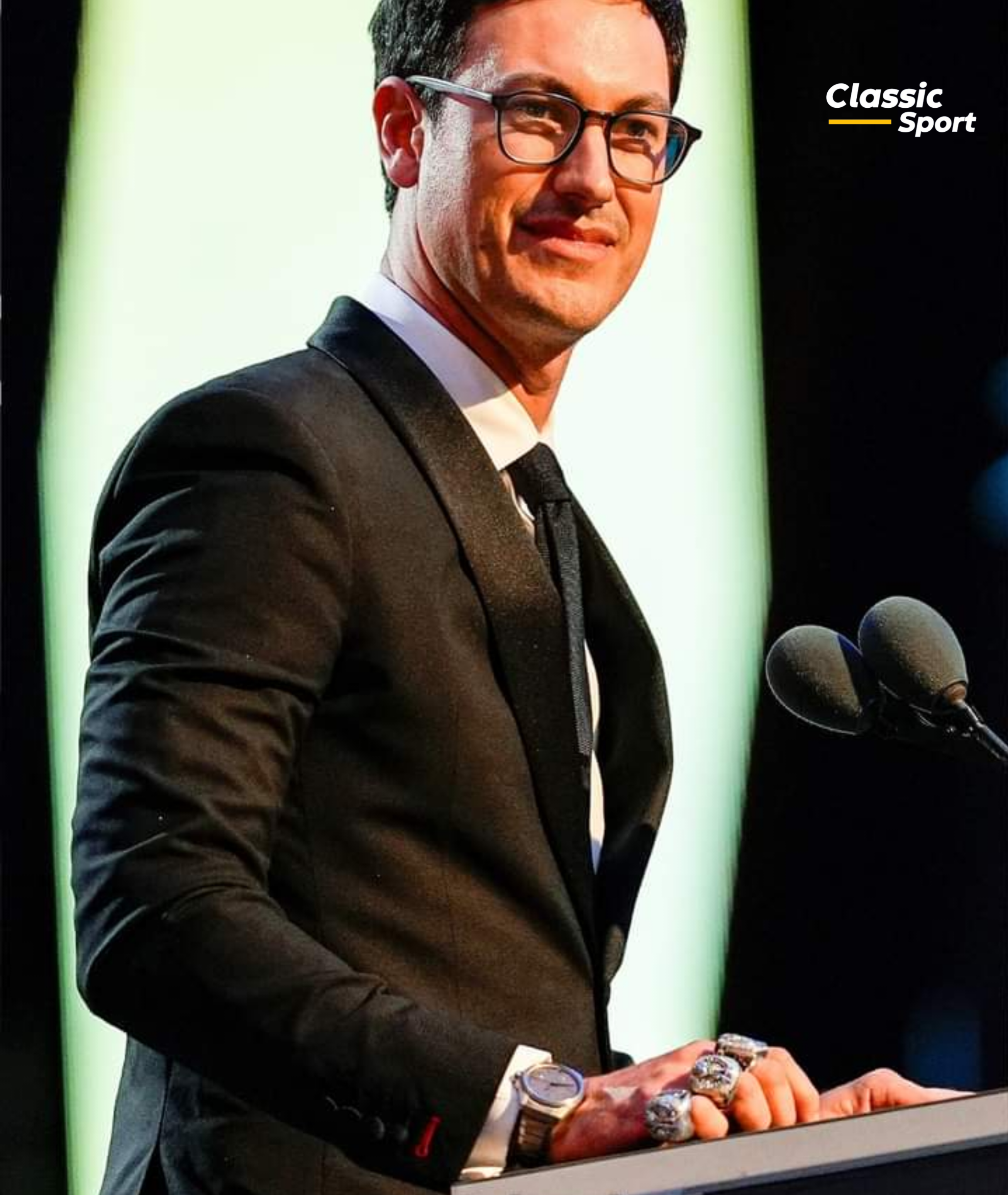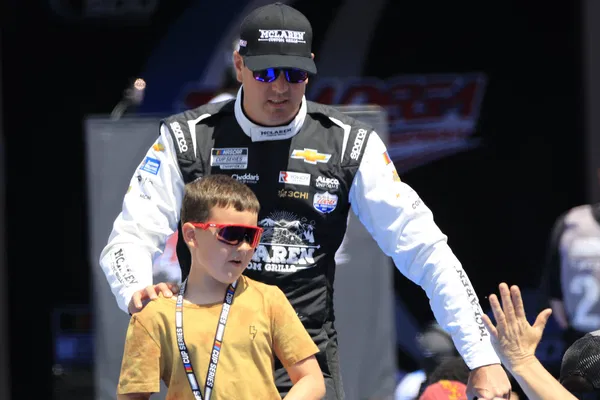Even Richard Petty found himself bored while watching the recent race at Bristol Motor Speedway. Petty, known as “The King” in NASCAR, remarked, “I think of all the races I’ve seen in a long time, that (Bristol) was the least racing of any place we’ve ever seen.” This comment came after Kyle Larson dominated the race, leading 462 of the 500 laps. Many fans and veterans had high hopes for the race, expecting it to mirror the excitement of the season’s first race at Bristol. Unfortunately, the event fell short of expectations.
The spring race at Bristol had delivered unpredictability as teams struggled with unexpected tire wear, even more severe than what NASCAR and Goodyear had anticipated. Teams were scrambling mid-race for more tires to complete the event, and it ended with veteran Denny Hamlin taking the checkered flag. His Joe Gibbs Racing (JGR) team excelled in managing tire wear that day. However, none of that excitement carried over to this most recent race. Instead, it became a lackluster Kyle Larson showcase, leading many veterans to question NASCAR’s current short-track package. Richard Petty, one of the most respected figures in the sport, joined the chorus of concern.
For the 2024 season, NASCAR introduced a new aerodynamic package designed to improve competition on short tracks. This package included splitter stuffers, a wider spoiler (increased from two inches to three), and changes to the diffuser and its strakes. However, the horsepower remained unchanged at 670. Denny Hamlin, who finished fourth in the race, has long been vocal about the need for increased horsepower. He previously argued that more horsepower forces drivers to get off the gas sooner, creating more opportunities for overtaking. Hamlin believes even a modest increase of 50 horsepower could help, though he has advocated for NASCAR to return to the 750 horsepower of the pre-next-generation car era. He insists that this change wouldn’t require much adjustment from NASCAR, but the organization has prioritized safety, making it hesitant to make alterations.
Now, even Richard Petty is echoing Hamlin’s sentiments. The seven-time Cup Series champion commented, “Until they give them a little bit of horsepower, at least on the short tracks… When the cars get down below them, the outside groove is so fast. If the guys had a little bit of horsepower, once they got down there, they could at least come off the corners. When they run low, it bogs the car down.” Petty’s opinion carries weight, given his legendary status and experience on short tracks.
Petty’s impressive record on short tracks includes 552 starts, 128 wins, and an average finish of 8.1. So when he says this was one of the dullest races he’s seen, it’s not something to dismiss lightly. The statistics from the race support his claim. Unlike the 54 lead changes in the first Bristol race, this one saw only eight, largely due to drivers staying out during stage breaks to earn extra points. Besides Larson, only three other drivers led laps: Alex Bowman led 34 after starting in pole position, Tyler Reddick led for three laps, and Bubba Wallace led for one. This lack of competition mirrored recent trends at short tracks. For example, at Richmond, only three drivers led 339 of the 400 laps.
While some point to reduced tire wear as the reason for these lackluster races, many veterans believe the real issue lies with the next-generation car. Denny Hamlin argues that increasing horsepower is only the first step; the car itself needs a complete redesign. He has suggested that the next-gen car be reworked from front to back. After the recent Bristol race, he reiterated his belief that NASCAR is trying to fix a car problem with tire solutions, which he feels is ineffective.
Dale Earnhardt Jr., another veteran, agrees with Hamlin’s assessment. He believes the next-gen car isn’t suitable for oval racing. According to Earnhardt, the car is essentially a sports car, designed with technology borrowed from Australian Supercars, which are primarily built for road courses. He explained that the car’s components, such as its wide tires, diffuser, and underbody aero package, are better suited for road racing than for NASCAR’s oval tracks.
With the penultimate race of the season approaching at Martinsville, NASCAR faces pressure to make adjustments quickly. If Martinsville turns into another race dominated by a single driver, it could spell trouble for the sport. Fans and veterans alike are calling for changes, and NASCAR needs to act fast before it risks losing more of its excitement and competitive edge.
NASCAR Legend Richard Petty Echoes Denny Hamlin’s Horsepower Debate as Bristol Fails to Excite Fans




